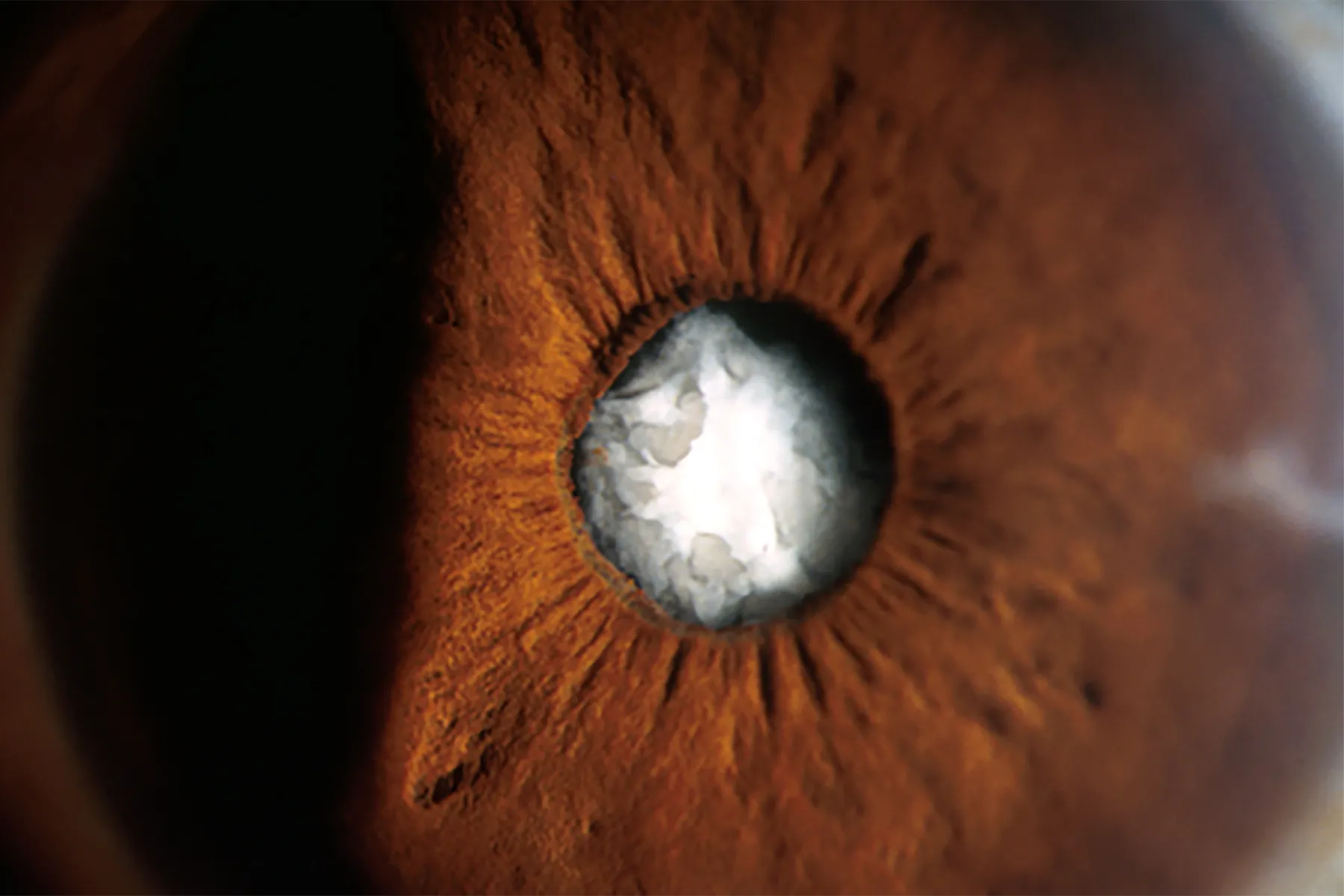
April 25, 2024 – Over 2 million people in the 1980s and 1990s had a procedure known as radial keratotomy, a vision-correcting eye surgery that preceded the laser surgery known as LASIK. As part of the procedure, eye surgeons would make tiny cuts in the patient’s cornea, the outermost layer of the eye, in a radial pattern from the center, to flatten the central cornea to correct nearsightedness.
The surgery, known as RK, was considered a successful tool for correcting vision at the time, but in recent years, many of these patients who have gone on to have cataract surgery are having major complications afterward. Cataract surgery is a lens replacement procedure done when the natural lens gets a cataract, or cloudy area. Since the cornea has been manipulated through RK, doctors can’t accurately calculate the correct power of the lens replacement needed, and, as a result, many patients have had serious post-surgery vision problems.
As part of cataract surgery, the natural crystalline lens of the eye is removed and replaced with an artificial lens implant, called an intraocular lens. Many variables go into calculating the correct power of the implant in order to ensure good vision after surgery, said Ella Faktorovich, MD, director of refractive and corneal surgery at Pacific Vision Institute in San Francisco.
“One of the most important variables is the power of the cornea and, after RK, especially if there are many incisions, it may be challenging to accurately determine the correct corneal power,” she said. “This may result in a less-than-accurate calculation of the implant.”
What’s more, most former RK patients don’t achieve the vision quality after cataract surgery that they expected. A study published in the September 2022 issue of the journal Eye found that “significantly fewer eyes with previous RK” achieved enough visual correction to avoid glasses.
Complications After Surgery
Even before cataract surgery, many patients had vision changes because the RK eye incisions, or cuts made during the surgery, weren’t uniform. “RK was safe and worked well, but it also had its considerations,” said George O. Waring IV, MD, medical director of the Waring Vision Institute in Mount Pleasant, SC.
Many patients could become more farsighted due in part to the regrowth and restructuring of cells in the eye after treatment, after which the incisions may fill in, changing the shape and focus of the cornea. The number, depth, and placement of incisions could also impact vision, Waring said.
What’s more, many patients had changes in their vision at different points in the day based on the eye’s hydration. While you sleep, the eyelid is closed and the eye is fully hydrated, but during the day, it may dry out as it remains open.
“When hydrational changes in the eye are translated to the incisions, it can change the shape and focus of the eye from the morning when you wake up into the evening,” Waring said.
Improving Cataract Surgery in RK Patients
In recent years, innovations have vastly improved RK patient outcomes as a result of new methods that account for how much average error there is in an RK eye. For example, some new lenses can be adjusted in the eye for 2-4 weeks after surgery using a laser treatment.
And new premium lenses from Johnson & Johnson Medtech expected to hit the U.S. market in the next year are designed to have some range of focus in the lens so that after surgery, they improve some of the uncorrected nearsightedness, foresightedness, and stigmatism in patients with RK, said Rahul T. Pandit, MD, medical director of the Houston Methodist Hospital Ophthalmology Operating Room.
Finally, the newest technology uses a small aperture lens implant called IC-8 Apthera IOL to improve RK patient outcomes. In this case, the lens implant goes into the eye and creates a small pupil so that the eyes don’t dilate, which allows vision to be much sharper. But there’s a trade-off to the procedure: Patients will give up their peripheral vision.
“You can imagine that there are pros and cons to this, but for people who have really irregular eyes [due to RK] that are always subject to glare and variation, they may prefer to lose their peripheral vision so that they can see more sharply,” Pandit said.
Setting Clear Expectations Before Surgery
It is important that doctors set clear and realistic expectations about surgical outcomes so patients don’t expect that their vision will be crystal clear after surgery, Pandit said. Even with the new innovations, there are shortcomings. “We used to be at around 50% improvement in cataract patients with RK, and these new technologies can take us to around 70%,” he said.
Many RK patients will need some vision correction, such as glasses, after surgery. “We’re trying to get as close to perfect as we can,” Pandit said, “but we’re not there yet.”






